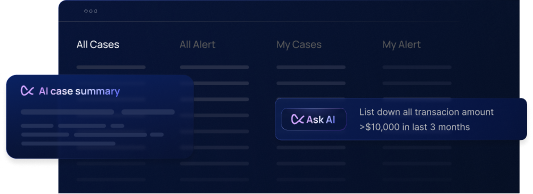Financial institutions today face a new mandate: support both traditional fiat payments and emerging stablecoin transactions. Customers now expect to transact not only in currencies like EUR or USD through bank accounts, but also in digital tokens like USDC, USDT, or EURC across blockchain networks (Ethereum, Stellar, Polygon, etc.). Stablecoins, digital assets pegged to fiat currencies, have rapidly grown from a niche to a $255 billion market and could surge to $2 trillion within a few years. This growth is fueled by the appeal of stablecoins’ fiat-like stability combined with the speed and programmability of blockchain. It’s no surprise that mainstream financial players are getting on board: Mastercard and Visa now facilitate stablecoin payments, and even major banks have begun issuing their own stablecoins.
This convergence of traditional and digital finance is creating hybrid payment infrastructures. Fintechs, digital banks, remittance providers, and even incumbent payment processors are enabling transactions that span both fiat and crypto rails. For example, startups like Mesta offer a single API that bridges global fiat and stablecoin payments, supporting USD/EUR alongside USDC/USDT across 100+ countries. Even established processors are integrating stablecoins: Worldpay’s new service will allow businesses to make near-instant payouts in stablecoins to recipients in over 180 markets via the same platform that handles 135 fiat currencies. The message is clear: to remain competitive, financial institutions need to operate on two rails at once, fiat and stablecoin, providing seamless payment experiences across both.
Dual Rails, Double the Complexity: Compliance Challenges
Supporting both fiat and stablecoins, however, is not as simple as adding another currency to the ledger. It introduces significant compliance and operational complexity. Financial institutions must comply with conventional financial regulations and new crypto-specific rules. In practice, this means navigating overlapping regimes: a fintech enabling stablecoin payments might fall under traditional e-money licensing as well as emerging cryptoasset regulations. Global standard-setters (BIS, FSB, IOSCO) have made it clear that stablecoin payment systems performing equivalent functions to traditional payments should face equivalent regulation, bringing stablecoins firmly inside the regulatory perimeter. In other words, a company handling USDC or USDT transactions is expected to uphold nearly the same AML/CFT standards and oversight as a bank handling cash transfers. This dual compliance burden can be daunting.
Operationally, many FIs have found themselves adopting fragmented toolsets to monitor these parallel rails. It’s common to see one system (or vendor) monitoring on-chain crypto transactions and a completely separate system monitoring fiat bank transfers, with analysts then reconciling alerts manually. Such siloed setups breed inconsistency and inefficiency. For instance, a fintech might use one tool for crypto transaction monitoring, another for fiat, and even spreadsheets for reporting suspicious activities, making it hard to get a unified view of customer risk. Different rails often come with different rulebooks and workflows: a stablecoin transfer might trigger alerts under a set of crypto-specific red flags (wallet risk scores, smart contract analysis), whereas a wire transfer is evaluated against a separate rule set for fiat AML patterns. The result? Compliance teams juggle different monitoring systems, inconsistent fraud detection workflows, and multiple case management queues. This fragmentation not only drains productivity but can also let risks slip through the cracks, or conversely, generate a flood of duplicate alerts from each system.
The stakes are high. Regulators expect robust anti-money laundering (AML) and counter-terrorism financing controls across both fiat and crypto activities. That means screening transactions against sanctions lists, monitoring for suspicious patterns, filing regulatory reports (SARs/STRs), and maintaining audit trails, regardless of the payment rail. For FIs, meeting these expectations on dual rails often meant bolting together separate compliance processes for each – a recipe for gaps and exorbitant costs. Clearly, a new approach is needed to tame the complexity of hybrid payments.
Unifying Compliance Across Fiat and Stablecoins
What if financial institutions could manage all their compliance controls in one platform for both fiat and stablecoin transactions? This is the promise of a unified platform approach. Instead of duplicating monitoring systems and teams for each rail, a unified solution provides consistent transaction monitoring, risk scoring, fraud detection, AML case management, and sanctions screening across both fiat and crypto channels. The idea is to abstract away the underlying rail (whether a SWIFT wire, an ACH transfer, an on-chain USDC transaction, or a stablecoin wallet payment) and apply a common compliance logic and oversight to all transactions.
In a unified compliance platform, alerts from a euro bank transfer and a USDC on-chain transfer feed into the same dashboard for analysis. Investigators use one case management interface to review both types of transactions, applying a unified workflow and risk scoring model. Rules and scenarios for suspicious activity detection are defined once, then applied across rails – rather than maintaining separate rulebooks for each payment type. This not only ensures consistency (the same risk triggers apply to a $10,000 SWIFT transfer and a 10,000 USDC blockchain transfer where appropriate) but also unlocks a holistic view of customer behavior. A user rapidly moving funds out through bank channels and crypto channels simultaneously, for instance, can be detected as a single pattern, not two unrelated events.
Crucially, a unified approach lets compliance teams manage risk in real time across all rails. Modern platforms in this space leverage high-performance architecture so that even blockchain transactions (which occur 24/7) can be monitored with the same immediacy as card swipes or ATM withdrawals. This means if a risky pattern emerges, whether in fiat or stablecoin activity, it’s caught instantaneously and flagged for review or blocked. And all of this happens through a single API and single dashboard, simplifying operations dramatically. The goal is to consolidate onboarding data, transaction monitoring and operational alerts into a unified system for greater efficiency and visibility. In essence, the institution’s compliance controls become rail-agnostic – focusing on customer and transaction risk holistically, rather than the technology underlying the transaction.
Flagright: Fiat and Stablecoins Payments Monitoring via One API
Flagright’s platform exemplifies this unified compliance approach. Flagright is an AI-native transaction monitoring and AML compliance solution designed to centralize detection, investigation, and reporting of suspicious activity on one platform. Financial institutions using Flagright can monitor traditional payment flows (like card transactions, bank transfers, ACH, wires) and crypto flows (like stablecoin transfers on-chain) side by side, with a single API integration and a unified dashboard for their compliance team. This means a fintech or bank doesn’t need one vendor for fiat transaction monitoring and another for blockchain analytics, Flagright handles both through one interface.
How does it work in practice? Flagright’s transaction monitoring engine ingests data from all rails in real time. For example, a customer could feed in their SEPA and SWIFT payments, card swipes, as well as on-chain events from Ethereum or Stellar, all in real-time. This real-time monitoring covers all on-chain and off-chain activity, from card payments and ACH/wire transfers to stablecoin wallet flows, in one compliance system. A suspicious pattern (say, rapid layering of funds through both bank and crypto accounts) generates an alert that the compliance team can investigate in Flagright’s case management module. That case management is likewise unified: analysts can see the full context of a customer’s fiat and crypto transactions on one screen, document findings, and generate regulatory reports without needing to pivot between tools.
By replacing fragmented systems with this all-in-one platform, Flagright helps financial institutions eliminate duplicate work and inconsistent processes. Compliance officers aren’t logging into separate portals or exporting data to Excel to piece together what a customer is doing. Alerts are managed in one queue, investigations follow one workflow, and every action is logged for audit in one system. The benefit is not just convenience, but a stronger risk posture: with a unified view, it’s harder for illicit activity to hide in the seams between fiat and crypto channels.
Flagright’s platform also brings modern techniques like AI forensics to work across both rails. Suspicious behaviors are automatically analyzed and described by AI, whether they occurred via a bank transfer or a blockchain transfer, helping investigators quickly understand complex patterns. The platform’s rule engine operates with sub-second response times, so customers can, for instance, screen a crypto wallet withdrawal or a card transaction against risk rules instantly as it happens. And with a unified system, uptime and scalability become a single concern. Flagright boasts 99.99% availability across its global infrastructure, ensuring that compliance controls remain uninterrupted even at peak transaction volumes. For a hybrid fintech handling thousands of transactions per second across both euros and USDC, that reliability is crucial.
In short, Flagright demonstrates that it’s possible to abstract the currency and rails while centralizing compliance. Whether it’s a stablecoin flowing on the Stellar blockchain or a wire transfer through the Federal Reserve system, the platform applies the same rigorous checks (KYC-linked risk scoring, sanctions screening, anomaly detection) and feeds into the same case management workflow. The result is a single source of truth for an institution’s financial crime risk, even as their payment offerings expand into digital assets.
Real-World Use Cases Driving Unification
For many financial institutions, the push toward unified fiat–stablecoin compliance is not theoretical, it’s being driven by concrete business use cases. Here are a few scenarios where a one-platform approach is especially powerful:
- Cross-Border B2B Payouts in Fiat and Stablecoin: Companies making international payouts (to suppliers, gig workers, marketplace sellers, etc.) want the option to use either fiat or stablecoins depending on speed and cost. A unified compliance platform enables, for example, a euro SEPA payout and a USDC payout to be monitored side by side. Worldpay’s recent partnership with BVNK illustrates this demand: their service will let businesses pay third-party recipients globally in stablecoins without the businesses themselves handling crypto, all through Worldpay’s existing payouts infrastructure. In practice, a fintech could route a portion of payments through traditional bank transfers and another portion through stablecoins (for regions where blockchain payouts are more efficient), and still have all transactions go through the same compliance checks.
- Treasury and Merchant Settlements in Stablecoins and Fiat: Fintechs and banks are exploring using stablecoins for treasury operations or merchant settlement to avoid banking hours or correspondent fees. For instance, a payment processor might settle a day’s transactions to a merchant partly in local currency and partly in a stablecoin like USDC (which the merchant can hold as dollars or quickly convert). Indeed, some acquirers started offering merchants the choice to receive settlement in crypto. Worldpay began letting certain merchants get paid in USDC back in 2022. With unified compliance, whether the payout to a merchant is in EUR via SEPA or in USDC on Ethereum, the same anti-fraud and AML rules are applied. Treasury teams can likewise move funds into a USD stablecoin for yield or faster deployment, while compliance keeps a unified risk watch on those flows just as it would on conventional bank accounts.
- Embedded Finance with Wallet-Based Rails: A growing number of digital platforms (from digital banks and neobanks to consumer apps) offer built-in wallets that can hold both fiat balances and crypto assets, enabling users to pay or transfer using either. Consider a neobank that gives users a euro account and a USDC wallet within the app, or a self-custodial wallet like Offramp that issues Visa cards linked to stablecoin balances. Offramp’s model allows users to spend stablecoins like fiat via a card, receive funds via ACH/wire, earn yield on crypto, and more. For the provider, this means their compliance apparatus must monitor card swipes and blockchain transactions together. A unified platform is essential here: it can risk-score a user’s on-chain crypto deposits and their fiat top-ups in unison, detecting if perhaps a fraudster is cycling funds between the two. It also avoids the provider needing separate compliance teams, one to oversee the wallet’s crypto side and one for the traditional side – which would be inefficient and potentially blind to cross-rail risks. With one compliance engine, an embedded finance platform can confidently expand into multi-rail services (like crypto wallets, stablecoin rewards, etc.) knowing that all transactions funnel into the same surveillance net.
These use cases underscore why “two rails” of payments don’t have to mean two isolated compliance silos. Whether it’s an SME using stablecoins for faster cross-border payouts, a merchant accepting settlement in EUR and USDC, or a fintech app blending bank accounts with crypto wallets, the future of payments is hybrid. And supporting that future requires compliance infrastructure that is as fluid and interconnected as the transactions themselves.
Key Challenges Solved by a Unified Approach
Adopting a unified fiat–stablecoin compliance platform solves several pain points that plague institutions running separate systems for each rail:
- No Duplicated Rulebooks or Alert Streams: A single platform means one set of monitoring rules covers all transaction types, and all alerts funnel into one queue. Teams no longer maintain parallel rulebooks (one for fiat, one for crypto) or triage two sets of alerts for the same customer activity. This eliminates conflicting thresholds and reduces the workload of handling redundant alerts from different systems.
- No Siloed Teams or Duplicate Vendors: With all rails consolidated, financial crime compliance can be handled by one integrated team rather than separate specialists for crypto vs. fiat. This breaks down organizational silos and fosters a more holistic skill set among analysts. It also means an institution isn’t juggling multiple vendor contracts and integrations, saving cost and simplifying vendor due diligence. The compliance tech stack shrinks to one core platform instead of a patchwork.
- Fewer False Positives, Smarter Detection: When behavioral intelligence is shared across rails, the system can better distinguish genuine suspicious behavior from noise. Unified platforms have demonstrated dramatic reductions in false positive alerts – in Flagright’s case, 93% fewer false positives and major cost savings once fragmented systems were replaced. This is because the platform can see the full context of activity (e.g. offsetting patterns between fiat and crypto accounts) and apply advanced analytics universally. Analysts spend less time on benign alerts and more on true risks.
- Real-Time, Multi-Rail Risk Visibility: A unified approach gives compliance leaders real-time dashboards of risk across all payment channels. You can instantly grasp a customer’s aggregate exposure and activity, instead of manually correlating data from different sources. This holistic visibility is critical for spotting complex laundering schemes that exploit gaps between rails. It also aids in regulatory reporting and audits, you can readily produce a comprehensive trail of a customer’s fiat and crypto transactions together, with all investigative actions in one case log. In sum, decision-makers get a 360-degree risk view at any moment, strengthening oversight and agility in response to threats.
By addressing these challenges, unified compliance infrastructure doesn’t just make life easier for compliance teams, it also enhances the overall risk posture of the institution. With consistent controls and a bird’s-eye view, nothing falls through the cracks between fiat and stablecoin operations.
Practical Advice for Financial Institutions Embracing Both Rails
For financial institutions gearing up to support hybrid payment rails, here are some practical considerations to ensure your compliance keeps pace:
- Centralize Compliance, Abstract the Rails: Seek solutions that allow you to abstract away the currency or network and focus on centralized risk control. The right platform will treat a payment as a payment, applying consistent checks whether it’s on ACH or blockchain. This avoids building two parallel compliance programs. Evaluate providers by how well they can ingest multiple data streams (fiat transactions, crypto transactions, KYC data) and unify detection and reporting in one place.
- Insist on Real-Time and Resilient Performance: Hybrid infrastructure is 24/7, so your compliance tech must be fast and always-on. Look for sub-second API response times for transaction screening and monitoring (so adding crypto flows doesn’t introduce latency). Demanding near-100% uptime is reasonable, your chosen platform should handle peak volumes across both rails without downtime. Also ensure it provides robust audit trails and role-based access, so investigators can trust the system for both fiat and crypto casework.
- Apply Equal Rigor to Stablecoins (Without Double the Cost): Embrace the mindset that stablecoin rails deserve the same stringent controls as fiat, regulators certainly hold this view, and it’s key to preventing abuse. But you can achieve this rigor without doubling your costs by using unified tools instead of separate ones. When evaluating vendors or internal builds, compare the total cost of ownership of one platform versus maintaining two or more systems. Often, a single integrated solution not only avoids redundant expenses, it also unlocks efficiencies (like shared data insights) that multiply the compliance effectiveness. In short: don’t cut corners on stablecoin compliance, but do demand technology that lets you scale those controls economically.
Conclusion: One Platform, Two Rails – The Way Forward
As fiat and stablecoin payment streams continue to converge, financial institutions must evolve their compliance strategies to meet this new reality. A unified AML compliance software approach enables organizations to manage risk holistically, stay agile amid regulatory changes, and deliver seamless service across both traditional and digital value transfer networks. Instead of fragmenting compliance operations and budgets, forward-thinking teams are consolidating and innovating—transforming the challenge of operating on “two rails” into an opportunity for smarter, AI-powered oversight.
Ultimately, the institutions that succeed in this hybrid era will be those that treat all rails with equal vigilance while harnessing the efficiencies of modern regtech. Now is the time to evaluate your infrastructure and consider solutions that can future-proof your compliance program. To see how unified compliance can power your fiat and stablecoin offerings, you can book a demo with Flagright and explore first-hand how one platform can secure both payment rails under a single, robust compliance umbrella.




.svg)





















